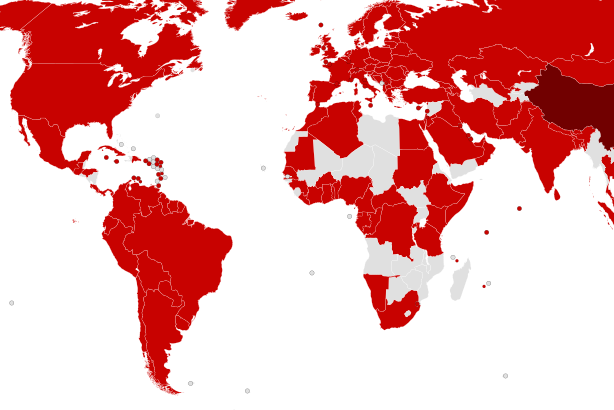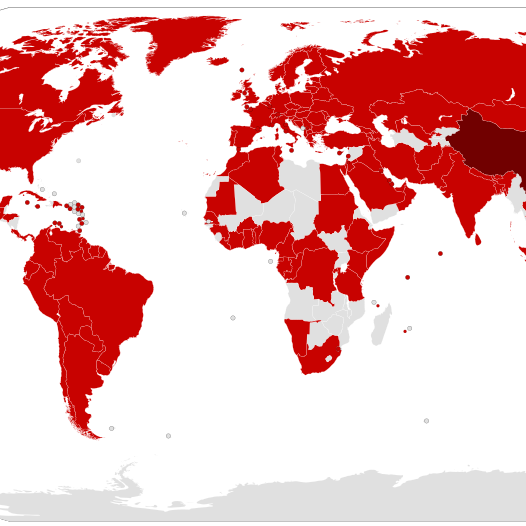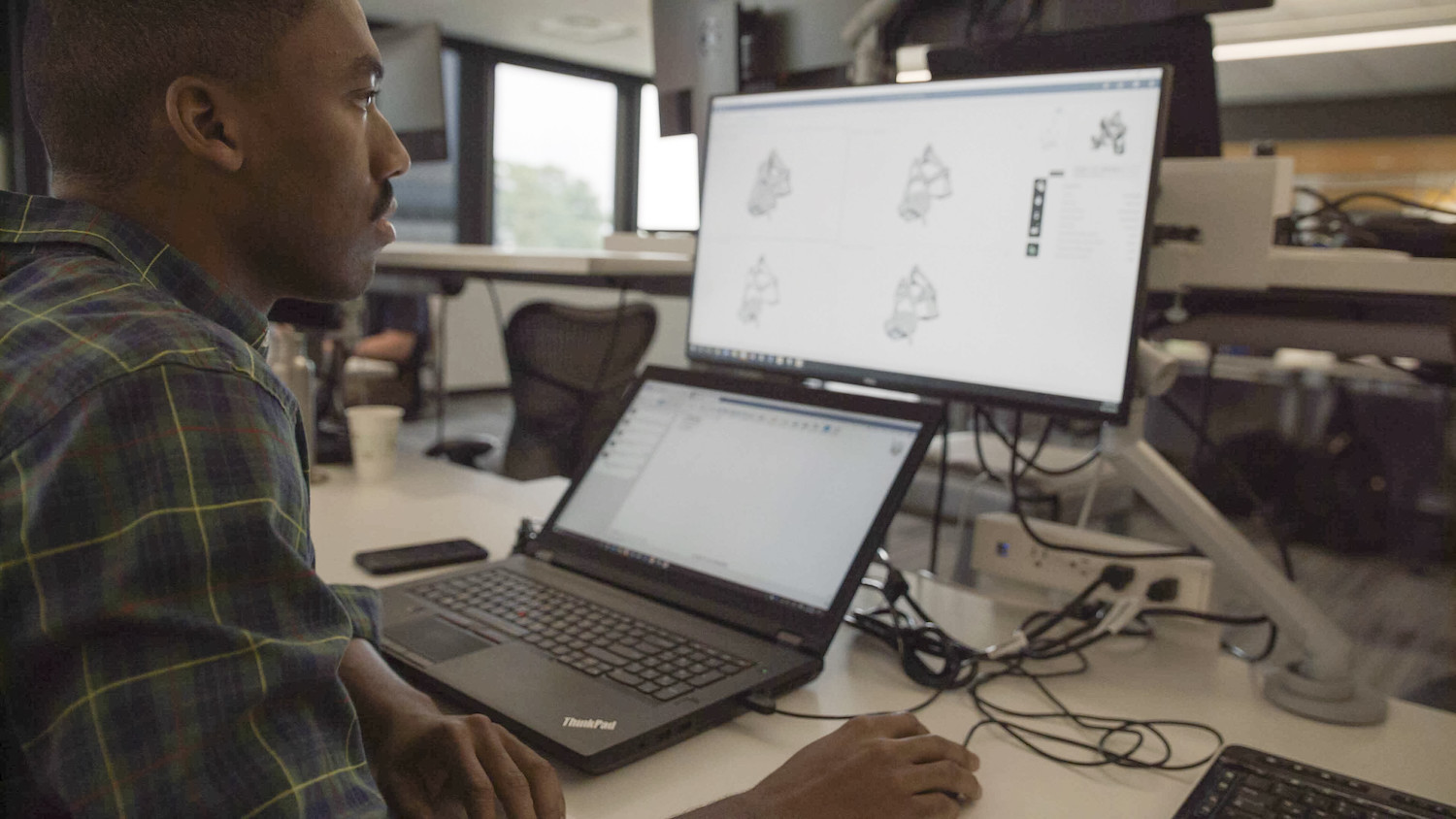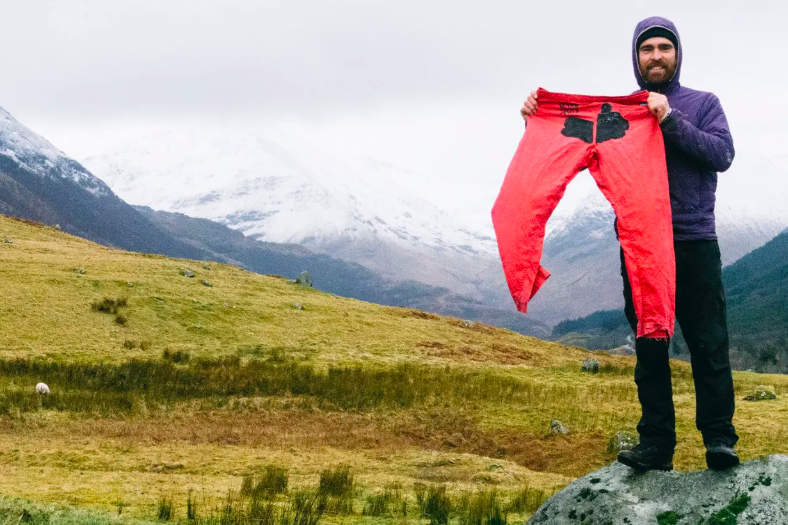3BL Media Opens CSRwire for Free Social Impact Communications Around COVID-19


As we start a new work week, many of us are still wrapping our heads around the reality that we’ve awakened to a much different world than the one we knew just a few days ago. Many of our colleagues are working remotely while their children stay home with them as schools shutter worldwide. All of us are concerned about our older family and friends, to whom COVID-19 poses the greatest risk.
Meanwhile, the guidelines that public health officials have urged all of us to follow have been a disruption to all organizations, including the world’s largest corporations and NGOs taking on some of the most daunting challenges as each of us does our part to flatten the curve.
To that end, 3BL Media, realizes that many organizations have not budgeted for communicating their response to COVID-19. 3BL believes it’s important to help these purpose-driven organizations share how they're working to keep their customers, employees and communities safe.
Brand communicators with press releases that fall into this category should feel free to submit them to COVID19@3blmedia.com for distribution over the CSRwire network at no charge - with a maximum of two releases per organization.
And there is no shortage of companies that are finding ways to help society cope with the ramifications that COVID-19 is having on our daily lives. Examples include:
- Schools scrambling to deliver K-12 coursework online are getting help from Zoom Communications, which is waiving fees for online streaming of classes.
- College kids who have lost campus access to Adobe's Creative Cloud are being given free subscriptions until college life returns to normal.
- Cisco Systems is offering expanded capabilities on the free version of its Webex video conferencing service; it is also offering free resources and best practices to companies managing a global staff that is suddenly working remotely.
- Verizon is eliminating data caps on internet plans and forgiving late payments. Comcast is boosting the speed of internet access for all customers and will offer 60 days of free service to new families as schools close and students adjust to studying and learning from home.
- Disney released the movie Frozen 2 for internet streaming just as tens of millions of children are furloughed from school.
- Cash and product donations for government and nonprofit entities is flowing from corporations like SC Johnson, Medtronic, Johnson & Johnson, United Airlines and Wells Fargo.
- CVS and Walgreens have waived home delivery charges for prescription medications as more states and municipalities insist that elderly citizens remain at home during this crisis.
As Greg Hills, co-CEO of FSG recently said, “A company’s most valuable contribution to addressing COVID-19 resides in using its unique assets and capabilities to meet the pressing needs of individuals and communities.”
On that note, we here at 3BL Media will do what we can to work with organizations that seek a trusted communications partner as we take on this pandemic together in the weeks ahead.
Image credit: Ratherous/Wiki Commons
The NBA’s Adam Silver Shows Business How to Lead in Times of Crisis


As we start this Monday morning in a very different world than the one to which we awakened just one week ago, we’ve witnessed plenty of examples of where global leaders have shined while, quite frankly, others have tanked. And more than anyone else, NBA Commissioner Adam Silver has shown how to step it up.
We’ve seen restaurant and retail chains promise sick pay to affected workers — after public outcry drove them to make such a decision. We’ve seen some utilities (but not all) announce they won’t be quick to shut off the switch or valve, though we here at 3p would argue that isn’t leadership, but is instead showing humanity. And true, the beleaguered airline industry has been dropping change fees, but they have little choice in the face of more cancellations than bookings.
In fairness, there has never been a herculean challenge like this — you can do your best to prepare for a natural disaster; society can rally in the face of a national security threat; and you can tighten your belt and shuffle money around in the event of an economic downturn. But we’re not facing a double whammy: it’s a whammy that is hurling barriers at us from all directions. The coronavirus crisis is still generating more questions than answers.
Nevertheless, Adam Silver yet again showed us how to make a bold decision while emphasizing what really matters.
By now you’ve heard the backstory of what led to the NBA's decision to suspend its 2019-2020 season. At first, the league was leaning toward having games continue in front of empty arenas. But then a Utah Jazz player tested positive for COVID-19, and it was clear what Silver had to do.
“This should not, of course, be a business decision. We should be listening to the public health experts,” Silver told TNT. Further noting the league’s responsibility to do what it can to stall the spread of the virus by stopping players from traveling across the country, he continued:
“We are relying on the public health experts. What they are telling us is if you can so-called ‘shift the curve’ or ‘flatten the curve,’ if we can push out how quickly this spreads as a public health matter, we’re doing a service for the country. Because particularly for old people, if a lot of people get sick quickly, we’re going to run out of resources, we’re going to run out of respirators, ICU beds and etc.”
Public safety comes first, Silver continued to explain during his TNT interview. And according to the commissioner’s account of meetings with the NBA’s Board of Governors and team owners, no discussion of money was ever made — though based on how other professional sports leagues and college sports quickly followed suit after Silver’s fast and unequivocal decision, each of the 30 team’s leadership surely assumed any discussion of revenue would be swatted away fast.
Sportswriter Dan Wetzel best articulated the commissioner’s strengths:
“Silver has always been a strong leader for the NBA. He’s made mistakes. He’s struggled occasionally. His ability to forcefully and convincingly explain his viewpoint though has always been his strong suit. Here was a smart, sensible, serious person making a very big decision that would cost his business incredible amounts of money, and then laying out in clear and concise ways why it had to be done.”
Silver is showing the global business community (and politicians) what it means to be a leader: Stand your ground and explain the reasoning that drives your decision logically and calmly, and if you have to, defer to the experts on matters that aren’t aligned with your pay grade. In Silver’s case, he made it clear, with humility, that we need to listen to those who are knowledgeable when it comes to medical and public health matters.
Sports has long given society a group of people to look to for inspiration — from the early 20th-century baseball players to women’s soccer star Megan Rapinoe. In this case, Adam Silver is the sports leader who is showing the way. And business leaders who have to answer to a multitude of stakeholders during these uneasy times should look to him as an exemplar on how to manage a crisis.
Image credit: Taylor Smith/Unsplash
Palm Oil Sustainability Takes One Important Step Forward


The ongoing challenge to bolster palm oil sustainability has largely fallen off the radar — due in part, of course, to one of the most worrisome and volatile times in recent memory. Neverthless, concerns over environmental stewardship and human rights are still bedeviling this global industry.
To that end, it says a lot that the Rainforest Action Network (RAN) has lauded PepsiCo for its adoption of a new palm oil sourcing policy, which closes a common loophole found in many global companies’ palm oil supply chains. RAN is among several NGOs that had insisted PepsiCo’s previous stance on palm oil was falling short of environmental and social protections.
A bolder palm oil sustainability plan that closes the loopholes
The food and beverage giant recently updated its policy to mandate all of its palm oil suppliers, not just the ones from which PepsiCo directly purchases this raw material, to commit to “No Deforestation, No Peat, No Exploitation,” or as the industry commonly calls this, NDPE.
Over the past decade, many companies have publicly announced NDPE policies, but critics of both the palm oil industry and the companies that buy this ingredient have countered that only focusing on direct suppliers meant that vast quantities of palm oil was still coming from dubious sources. Calls for industry-wide reform have continued, despite the fact that more responsibly-sourced palm oil has made its way into food and personal care companies’ supply chains.
In December 2018, TriplePundit’s Nithin Coca succinctly summed up why this industry has continued to be the focus of widespread scrutiny:
“Here’s the problem — not all land is equal, especially from an environmental or biodiversity perspective. Oil palm trees grow only in tropical regions, in the same place where rainforests exist. Rainforests are the lungs of the planet, sequester immense carbon stocks and host widespread biodiversity.”
Cautious optimism about the palm oil sector
Mongabay, a nonprofit conservation and environmental science news platform that has long been critical of many companies that comprise the palm oil industry’s global supply chain, is among the publications that has welcomed this shift:
“In addition to worker welfare, PepsiCo’s NDPE policy also commits it to addressing the problem of deforestation. In Indonesia, that centers on the alleged clearing and planting activity by a PepsiCo supplier inside the Leuser Ecosystem in North Sumatra.”
PepsiCo’s decision could nudge its competitors to frame palm oil sustainability policies that are more watertight. Such action is important when one considers the impact palm oil production has worldwide. According to the NGO International Union for Conservation of Nature (IUCN), global palm oil production surged 15-fold between 1980 and 2014. While the IUCN acknowledges that palm oil is part of ensuring global food security and economic development, the organization says unchecked production poses risk to over half of the globe’s threatened mammals and almost two-thirds of threatened bird species. And as recently as January, Amnesty International described palm oil plantations in Indonesia as a “disgrace,” with one senior investigator, Meghna Abraham, reporting:
“Something is wrong when nine companies turning over a combined revenue of $325 billion in 2015 are unable to do something about the atrocious treatment of palm oil workers earning a pittance.”
Looking ahead
RAN welcomed PepsiCo’s announcement, and made it clear the NGO would look forward on working with the company and the wider industry on palm oil sustainability.
“We commend PepsiCo for adopting a comprehensive policy and leading actions that, if implemented, will drive change in its palm oil supply chain as well as the broader palm oil industry,” said Robin Averbeck, agribusiness campaign director with RAN.
Image credit: Tafilah Yusof/Pixabay
The Olympics Will Become Carbon Positive From 2030


From 2030, the Olympics will become climate positive, the International Olympic Committee (IOC) recently announced at a meeting in Lausanne, Switzerland. What does that mean, you may be asking? The IOC defines it as carbon savings created by the host cities that exceed the potential negative impacts of their operations.
The IOC lists measures host cities must take, including minimizing and compensating for direct and indirect carbon emissions and implementing lasting zero-carbon solutions for the Olympic games. The contract with each city hosting Olympic games will include these requirements.
The organization wants “to do more than reducing and compensating our own impact,” said IOC President Thomas Bach. “We want to ensure that, in sport, we are at the forefront of the global efforts to address climate change and leave a tangible, positive legacy for the planet."
Investments from forests to renewables
As part of its efforts to offset emissions, the International Olympic Committee will support the Great Green Wall project, Africa’s initiative to fight desertification. The African Union leads the project, with the aim to create 8,000 kilometers of green landscapes across Africa. The project is a decade in and about 15 percent underway. Once completed, it will be the largest living structure on the planet, about three times the size of the Great Barrier Reef. The IOC will also plant an Olympic Forest from 2021 onwards in Africa’s Sahel region. “Creating an Olympic Forest will be one way in which we will work to achieve this goal,” Bach said.
Such projects are one example of how sustainability is embedded in the IOC, according to the organization. There are three pillars to the Olympic Agenda 2020, and one of them is sustainability. The IOC says it is already carbon neutral, as the organization’s estimated emissions from 2017 to 2020 have been offset already. Renewable energy powers most of the organization’s headquarters, the Olympic House, in Lausanne. And the IOC’s vehicle fleet in Lausanne includes eight hydrogen cars and the Olympic House features a hydrogen refueling station.
Dow is the official carbon partner of the IOC and aids in enabling the organization’s Olympic 2020 Agenda and sustainability strategy. The collaboration is the first one under Dow’s Leading Blueprint 2025 Sustainability Goal. As part of the partnership, Dow launched cross-sector programs balancing emissions in previous Olympic games. The programs are projected to reduce carbon emissions by 4 million tons.
Future Olympics venues have received the sustainability memo
All upcoming Olympic Games are committed to being carbon neutral. Tokyo (shown above) will host the Olympics this summer. All electricity used at the competition venues and Olympic Village will be 100 percent renewable. The official vehicle fleet of Tokyo 2020 will feature zero-emission vehicles, including hydrogen cars. And any remaining carbon emissions will be offset. Further, at least 65 percent of waste generated from the operation of the Olympics will be either recycled or reused, and smart water strategies are in place, including using rainwater and recycled water.

Photo: The Dolomite Mountains above Cortina d'Ampezzo, Italy, host of the 2026 Winter Games
Beijing hosts the Olympics in 2022 and made a commitment to use 100 percent renewable energy for all venues. Organizers plan to transplant trees in the mountains after the completion of venues. Plans are also in place to preserve and reuse waste materials after the completion of construction. The Shougang district in Beijing, which will host various venues and training centers for the 2022 Winter Games, was the site of an industrial complex until 2008: Cooling towers are now Olympic venues, and a former iron ore storage tower is home to the 2022 Games’ organizing committee.
Paris hosts the Olympics in 2024 and brags it will be the first host city to align with the Paris Agreement. Existing and temporary venues will comprise 95 percent of the venues, with any new construction being low in carbon emissions. All materials will be bio-based, electricity for the venues will come from 100 percent renewable energy, and only sustainable and certified food sources will be used.
Milano-Cortina 2026 and Los Angeles 2028 have also committed in their Host City contracts with the IOC to achieve carbon neutrality.
As for the 2030 Winter Games, we won’t know the host city until the IOC awards those games at a 2023 meeting in Mumbai. Based on various press sources, cities that could end up bidding for those games include Sapporo, Japan; Liviv, Ukraine; Salt Lake City, Utah; Stockholm- Åre, Sweden; Vancouver, British Columbia; and Lillehammer, Norway. But the host city will have two huge items on their agenda: minimize and compensate direct and indirect carbon emissions. The host organization committee will have to deploy zero-carbon solutions for those Winter Games as well.
To Design More Sustainable Products, Brands Forge Partnerships Between Human and Machine


Attractive as they are, these Kartell chairs look fairly ordinary at first glance. The midcentury modern feel is typical of the Italian furniture maker and its design collaborator, renowned French visionary Philippe Starck. But that sleek matte finish hides a secret: a unique partnership between human and machine.
The so-called AI Chair was created using generative design, a form of artificial intelligence that can devise hundreds of design alternatives from a single idea.
Developed by U.S. tech giant Autodesk, generative design uses simulation analysis to explore all possible solutions to a given challenge. In Kartell's case, that challenge was creating a desirable piece of furniture made solely from the scraps of its own industrial production.
“It’s not a question of simply creating a product that seems green, but of generating an industrial strategy that involves the entire manufacturing process,” Claudio Luti, chairman of Kartell, said in a statement.
The 100 percent recycled piece is a first for a company that's been a household name in contemporary furniture since the 1960s. And what is one small step for Kartell may prove to be one giant leap for the product design field, as companies from the auto sector to the architecture space eye generative design as a means of improving performance and sustainability.

Generative design: The creative process of the future?
Today's product design process goes something like this: Designers get a brief from their client, outlining the goals, timing and budget for a given project, and they mock up a handful of concepts. One or two ideas move on to physical testing, and the team continues to iterate on those concepts until it's time to go to production.
"With generative design, you can start right from the brief, input your goals and constraints, and arrive at hundreds of design options within minutes," Arthur Harsuvanakit, a senior designer on Autodesk’s industry research team, told TriplePundit.
"The biggest benefit is to quickly validate a design intention and a designer's assumptions of how things will perform. You get to more optimal designs faster without having to do physical testing," he explained. "It speeds things up. It saves on material. And it saves on prototype time."
The ability to speed up the design process has huge benefits for sustainability, Harsuvanakit added. "You can cover much more possibilities from the very beginning, and that allows you to consider things you might not have been able to consider using the traditional approach."
The wide variety of options afforded by generative design allow engineers and designers to eliminate excess material, consolidate parts and components, and create the possibility for more uniform materials, which can ease recyclability at end of life. "If a product is multi-material or too complex to disassemble, it's usually going to end up in the trash. If it’s mono-material, there’s a higher possibility for recyclability," Harsuvanakit explained.
Additionally, as new sustainable and recycled-content materials come to market every day, the ability to test their performance in a virtual environment can help them get into products faster, he said. "There's definitely a stigma of recycled plastics being not as high-performing in both structure and aesthetics compared to virgin plastics, for example. The more data we can gather about those recycled materials, the more we can bring truth to those assumptions."

(Image: An engineer uses generative design to create new car part concepts for GM.)
From car parts to buildings: Unlocking the potential of generative design
After more than five years of incubation and study within Autodesk's industry research department, generative design is now on the open market as part of the Fusion 360 platform for designers and engineers.
A recent collaboration with General Motors further tested its potential. “Generative design is a way for us to explore different design solutions for parts and components of our vehicles by using the cloud and artificial intelligence to combine the engineer and the computer,” Kevin Quinn, GM's director of additive design and manufacturing, told Autodesk. “By getting them to work together, we can come up with part-design solutions that would be impossible to generate with either the computer or the engineer working on their own.”
In one example, GM engineers used the AI-driven platform to create an optimized seat bracket, which secures seatbelt fasteners to car seats and seats to floors, reducing eight individual pieces down to one. In another, they created a new stabilizer component that combined 27 pieces into a single piece, cutting weight by 42 percent.
The motivation to cut down on individual components is twofold, Quinn said. “One, we can optimize for mass. But another ancillary benefit is that you’re reducing all the supply-chain costs associated with having many different parts that may be made by many different suppliers, which then have to all be joined together."

(Image: Using generative design, GM engineers reduced eight components in a vehicle seat bracket down to a single piece.)
Further, the new parts were created in-house using industrial-scale 3D printing (known in the industry as additive manufacturing), again cutting supply-chain costs. And with weight reduction potential of 40 percent or more, it's easy to see how generative design could aid in GM's plans to roll out more electric and fuel-efficient vehicles.
“If we can use generative design and additive manufacturing to give another mile per gallon of fuel economy or to extend by 10 miles the range of our electric vehicles, that can be a huge competitive advantage for General Motors going forward,” Quinn said.
Volkswagen also used generative design to develop an all-electric doppelgänger of its 1962 Microbus. And Stamhuis, a Dutch firm specializing in retail shop construction and renovations, put the system to the test on an even larger scale. Using Project Refinery, an Autodesk generative design beta for the architecture, engineering and construction industry, Stamhuis engineers created 40 design options for a retail liquor store in only 15 minutes.
The best may be yet to come
Generative design is still in the very early phases, and the functionality is still growing, Harsuvanakit said. But, as case studies like GM and Stamhuis demonstrate, engineers and designers already have a lot of options in terms of leveraging AI to speed up their work, improve performance and lessen environmental impact.
"There's very relevant information that exists today to make sustainable choices using generative design, and I think it's also a matter of communicating to the designer what is a sustainable choice," Harsuvanakit told us. "There's always a tradeoff: What happens to cost when you change a material? What is the environmental impact? To get metrics on those things and bring them to the stakeholders who are producing the product, that’s a really powerful way to tackle these challenges that hasn’t been done before."
Images courtesy of Autodesk
Patagonia to Consumers: Repair and Recycle Your Garments


Long vocal about a wide range of environmental issues, Patagonia now says it wants to help reduce textile waste by encouraging customers to either repair their gear or recycle it.
To that end, the outdoor door clothing company recently created repair guides in partnership with iFixit to help customers learn about the art of repairing clothes. Repair guides include how to patch a down jacket, how to install a zipper and how to remove stains. In addition, Patagonia also promotes product repair through its Worn Wear program. The message to customers is simple: Do not toss out any gear that only needs simple repairs.
Patagonia’s efforts fly in the face of a fashion industry that tends to create products that just don't last. Over the past 20 years, the number of clothes the average consumer owns increased by 60 percent, but that same consumer only keeps each garment half as long. To counter this fast-fashion trend, Patagonia says it wants to create garments that last, which includes proper care on the part of consumers.
Reuse, recycle and resell, says Patagonia
Patagonia says it takes back 100 percent of the products its customers return through the Worn Wear program. In addition, the company claims to have recycled almost 6,800 pounds of products in 2018, keeping that volume of textiles out of landfills. If a returned product is not fit for recycling, the company holds on to it in its Reno, Nevada, warehouse until it can find what it terms a “better solution.”
In turn, Patagonia sells its recycled products through the Worn Wear online shop. Launched in 2017, the program is a profitable one for the company, with over 120,000 units of recycled products sold. Patagonia aims to shrink its stockpile of products that cannot yet be recycled or reused and says it's investing in solutions to reach its ultimate goal: using only recycled and renewable materials in its products by 2025.
Textiles leave a huge impact on the environment
The textile industry leaves a huge impact on the environment. One estimate suggests it takes 2,700 liters of water to make just one cotton shirt. That is enough water for one person to drink for two and a half years. Cotton farming uses only 3 percent of the world’s arable land but is responsible for 24 percent and 11 percent of the world’s insecticide and pesticide use, respectively.
Synthetic fibers are not any better for the environment as they emit more greenhouse gases per kilogram. Dyeing fabrics, whether they are from natural fibers or synthetics, also requires a significant amount of water. Fabric dyeing uses around 1.3 trillion gallons of water every year, which is enough water to fill 2 million Olympic-sized swimming pools, according to the World Resources Institute.
Data from the EPA suggest textile generation in the U.S. nearly topped 17 million in 2017, and only 2.6 million tons of textile waste was recycled.
Discarded clothing makes up most textile waste, and few solutions are in sight. Textiles take 20 to 200 years to decompose, according to Close the Loop, which produces guides on how to make the fashion industry circular. While they decompose, textiles emit methane, a greenhouse gas with a warming potential 28 times that of carbon dioxide.
Take-back programs help create a more circular fashion industry
Patagonia is not the only company with a take-back program. The North Face’s Clothes the Loop program encourages its customers to drop off unwanted clothing and footwear at its stores. The company sends the collected clothes and shoes to the nonprofit Soles4Souls. The popular brand Madewell partners with the trade group Cotton’s Blue Jeans Go Green to collect denim from any brand at its stores. The program turns the unwanted denim into housing insulation.
Take-back programs that remake unwanted clothes into something new help cut down on the environmental impact of fashion. The fashion industry can become circular as more clothing and footwear companies create take-back programs and make garments and shoes from recycled products. A circular fashion industry “would benefit business, society, and the environment,” as the Ellen MacArthur Foundation puts it.
Image credit: Worn Well by Patagonia
Taking on the Behavioral Economics of Fear


The coronavirus is a human health tragedy. Its initial economic consequence is a supply shock that is disrupting consumer access to everything from ibuprofen to smart phones. We’re now confronting a wave of behavioral economics of fear unseen in modern times.
Hoarding-driven price gouging is the historical response to a supply shock. Today we are witnessing consumers cleaning out store shelves for toilet paper, hand sanitizers and bottled water. We see items like Purell selling for over $100 a bottle.
Soon we will have evidence of the next supply shock impact: a fall in demand driven by fear. In the case of coronavirus, fear is causing people and businesses to avoid purchasing services like travel or dining – which could have a huge impact on the most vulnerable in our society. Fear is driving people and businesses to avoid our workplaces. Combined, this will generate a fall in employment.
If sustained over a long enough time period, this current crisis will create a recession. The economic policy question is: What can be done to mitigate it?
Addressing the emerging behavioral economics of fear
Fear is economic cancer. Fear defined both the Great Depression and the Great Recession of 2008. The economic lesson learned is that prosperity will not return until consumer and investor fears are addressed. In the Great Depression, this was achieved through aggressive public policies that created Social Security and Federal Deposit Insurance. The fear of a banking system collapse during the Great Recession was mitigated through bank bailout funding.
Example steps for addressing fear in the wake of coronavirus would be:
- A massive commitment to a national system offering coronavirus screening to all Americans
- Developing an emergency production and supply plan to ensure every American’s access to face masks if they become ill.
- Implementing rationing of hand sanitizers to ensure its availability to all at traditional prices
- A FEMA type response for infection hot spots that supplies quarantine facilities and service provider protective gear.
The key point is not what these steps achieve. Rather their value, if the steps are credible, will be fear reduction.
Taking on the looming recession
The first step in addressing a potential recessions is a national health commitment to containing the spread of coronavirus and allaying fears. The second is to accept that monetary and fiscal policy alone are not solutions. The traditional recession-fighting economic tools of lowering interest rates and massive federal deficit spending to spark growth have been squandered by the current administration.
Innovation and productivity are the last remaining tools that can restore our economy. This path is enhanced through public policies that promote technology innovations that generate productivity growth.
Encouraging innovation and productivity can help overcome economic threats
To be clear, let’s not minimize the ongoing public health concerns. But in the long term, assuming success in containing the human health impacts and fears over coronavirus, there are many public policy changes that would open the flood gates to innovation and productivity. Many are tied to removing existing monopoly and oligopoly barriers that limit innovation and productivity growth. The following are two public policy ideas that could help dramatically increase consumer spending power, accelerate innovation and enhance economic productivity.
Cost of service internet and cellular pricing
Today’s internet and cellular service prices and accessibility is based on a laissez faire empowerment of monopoly and oligopoly providers. Their “service bundling” successfully maintains their revenues and customer retention at the expense of consumers seeking lower prices and technology innovations. At a time when more workers will be told to work from home, shifting internet and cellular pricing to a regulated cost of service model, while also opening these markets to consumer-centric service options, will lower consumer prices, increase consumer access to technology innovation and increase human productivity generated by the consumer’s accelerated technology adoption.
Implement a 50 percent electric utility excise tax
Renewable energy is a breakthrough technology delivering least-cost electricity. Now battery prices are falling toward economic viability as a peak power alternative to natural gas fired power plants.
However, utilities are capturing these technology-created cost savings for themselves rather than using them to lower electric bills. Utility tariffs and rules that limit consumer-owned access to solar and restrict consumers from using batteries to buy electricity during the day when prices are low to avoid buying electricity when prices are higher.
Traditional state utility commissions have proven themselves to be too slow in adopting technology innovation and too protective of utility revenues. A federal 50 percent excise tax on profits for utilities that fail to generate 50 percent of their electricity from renewables and fail to offer consumers unrestricted economic use of consumer-owned solar power and battery storage systems would incentivize aggressive utility reforms. The result to start, would be lower electric bills, which would help leave more cash in consumers’ bank accounts. Other benefits, of course, would be increased energy efficiency, lower healthcare costs achieved through reduced pollution and faster adoption of smart building technologies that enhance occupant productivity.
The bottom line
These public policy examples capture both the opportunity and challenge using innovation and productivity to grow the economy past a potential recession. The backlash from monopolies and oligopolies will be harsh and huge. The question will be whether the pain of the emerging recession, combined with a lack of fiscal and monetary options, create a window of public policy opportunity. If it does, then the lasting economic legacy of this current crisis could be a sustainable path to economic growth, improved human health and a decline in climate changing pollution.
Image credit: Belinda Fewings/Unsplash
GM Teases New All-Electric Lineup For the 2020s


Earlier this week, we reported on General Motors’ vehicle electrification strategy, which promises to usher in a range of electric vehicles (EVs) across GM's portfolio of brands over the next five years, with offerings in multiple market segments.
Committing $20 billion to the effort, GM’s CEO and chairman, Mary Barra (shown above), believes the investment in EVs presents a huge opportunity for the company.
In order to grow EV sales quickly, efficiently and profitably, GM’s strategy is to take a flexible and modular approach to vehicle design, allowing one model to inform the next and so on. At the heart of the product portfolio is the automaker's next-generation Ultium battery technology.
The first vehicle GM has shown publicly that will use its third-generation EV platform with Ultium battery technology is the Cruise Origin, which is actually an autonomous, shared electric vehicle (think: a driverless shared taxi, rather than personal passenger vehicle). At this stage, GM has not announced when the car will hit the roads, but as with all driverless AVs, going into service is no doubt subject to regulatory challenges as much as technical ones.
GM’s upcoming EV portfolio on display to the media at the company’s Design Dome in Michigan last week, though, was really focused on cars, trucks and SUVs, where drivers will still sit behind a steering wheel. What drivers can expect from GM is, in short, much more choice.
First to market: Revitalized Chevrolet Bolts
GM’s first two new EVs, however, won’t feature the new Ultium battery technology since they are scheduled for release in shorter order and will precede the ramp-up of the newer generation of vehicles.
A refreshed Chevrolet Bolt will launch later this year, which will look similar to the existing offering, while the Bolt EUV (electric utility vehicle) will be a slightly larger crossover-type variant based on the Bolt platform.
The EUV is slated to be launched in the summer of 2021 and will be the first vehicle outside of the Cadillac brand to feature Super Cruise, GM’s hands-free driving technology for the highway.
New electric Cadillacs will spearhead GM’s luxury offering
The most pre-production-ready vehicle on display featuring the third-generation Ultium battery platform is the new Cadillac Lyriq, which GM says will be revealed to the public in April.
This luxury SUV is recognizable from the front end as a Cadillac but with a more futuristic take and is shown in silhouette in the image below. The interior features an attractive wrap-around digital dashboard, eschewing the tablet-style display that Tesla pioneered and Ford has picked up for its Mustang-branded Mach E electric vehicle. GM promises details of the Lyriq’s launch will be shared during the April reveal.

A silhouette of the Cadillac Lyriq SUV (courtesy GM).
The wraps also came off the Cadillac Celestiq, a brand new vehicle which is still very much in the early concept stage.The exterior shows its form as both a long and sleek sedan with a sloping tail end, and GM says this car will be Cadillac's flagship model when released. Celestiq will be handbuilt locally in Michigan. As of press time, GM has not yet indicated when it will be released.
Rounding out the new Cadillacs, customers can expect an electric version of the brand's full-size SUV, the Escalade, which is recognizable as an Escalade — very large and as imposing as the gasoline variant has always been, and no more aerodynamic.
Other very large vehicles are also in GM’s pipeline.
GM flips the script on the Hummer
Yes, the Hummer is back. The exuberant, gas-guzzling, military-vehicle-inspired behemoth that characterized the reign of the large SUV in the pre-financial-crisis era of the mid 2000s will chart a new path in EV form for the 2020s.
Immediately recognizable as a Hummer, GM plans to produce two all-electric variants, and neither compromises on their sizable footprint. Firstly, an off-road-capable Hummer SUV will go into production by the fall of 2021, GM says. In addition, a long wheelbase SUT (sport utility truck) will feature a removable targa roof and an exposed cargo space similar to that f a pickup truck.
The SUT, while a pickup in format, is not, however, a full-size truck like GM’s gasoline-powered Chevy Silverado. But its bold and aggressive styling might appeal to some who were looking forward to Tesla’s Cybertruck but were disappointed with its uncompromising trapezoidal lines.
Hummers will certainly have the muscle. Sub-branded under GMC, they are targeted to impress performance-wise, featuring a battery capacity of up to 200 kilowatt-hours and as much as 1,000 horsepower from GM's new generation of electric power units. (An EV’s power unit is the equivalent of a conventional automobile’s engine, though technically power units are not “engines.”)
Down to earth with Chevrolet and Buick SUVs
Less exciting, but certainly more practical for many consumers than GM’s flagship models, are the mid-size electric SUVs that are on the automaker’s radar. GM will produce these models under both the Chevrolet and Buick brands.
GM showed both the Chevrolet and Buick SUV variants to reporters this month, which showcase similar styles. Both models will feature large-format digital dashboards, similar to, but not as polished, as that found in the Cadillac Lyriq. Though the styling of each SUV is pleasant enough, at this end of GM’s product portfolio, they appear somewhat generic rather than bold and exciting.
For Buick, in addition to an SUV, there will also be a smaller CUV, or crossover vehicle, which will run on the same wheelbase as the SUV. Based on the reaction at last week’s event in Warren, Michigan, these models are more appealing to the eye.
More choices on a common platform
With the noted exception of the new Chevy Bolts, all of these vehicles will be based on GM’s Ultium battery technology. Coupled with GM’s new generation of electric motors, this next generation of battery technology will allow for a greater range of EV power units.
Depending on the vehicle, GM’s power units will be either single or dual motor types, offering front-wheel, rear-wheel or all-wheel drive configurations. GM doesn’t get into all the specifics by vehicle, but in total, the company’s new range of EVs will combine just 19 battery and power unit configurations, which GM says reduces both complexity and cost. Compare this with the 550 internal combustion engine powertrain combinations GM builds today, and you can see why.
The modular EV platform will provide consumers with a range of performance levels depending on the vehicle type. At the higher end of the performance envelope, GM promises driving ranges of 400 miles or more per charge, and zero to 60 miles per hour in as few as three seconds.
Vehicles will be equipped with battery packs of between 50 kilowatt-hours at the low end and up to 200 kWh capacity for high-performance trucks. Power unit output will be between 235 to an astounding 1,000 horsepower.
GM designed its Ultium batteries for Level 2 and DC fast-charging, and most vehicles will have 400-volt battery packs and up to 200-kilowatt fast charging capability, while the truck platform will have 800-volt battery packs and a fast charging capability of 350 kilowatts.
A bold vision and many promises
There is, of course, a lot that GM promises, but the company asserts that all of the vehicles described here will go into production. Success will depend on the execution of this EV strategy, but also much hangs on the company’s belief that demand will be driven by offering customers a range of vehicles so they can find one that best suits their needs.
Notably, GM’s Detroit-Hamtramck assembly plant will be its first dedicated to building EVs, demonstrating the company’s commitment. Standing behind the strategy, GM CEO Mary Barra says it will take nothing less to change the company and peoples’ perception of it — forever.
Disclosure: The author’s attendance at the press event in Michigan was paid for by General Motors. Views expressed are those of the author.
Image credits: General Motors Corporate Newsroom
Despite Low Oil Prices, a Sunny Outlook for Renewables


The stock market is all over the place, and oil prices are right in the thick of it. But in the middle of all this volatility, some good news is trying to push through, at least according to Tomas Kaberger, an energy professor at Chalmers University of Technology in Sweden.
Kaberger analyzed data from the International Energy Agency (IEA) and the U.S. Energy Information Administration. He found that fossil fuel-powered electric generation, like coal and oil, fell in 2019 in the U.S., the European Union, and India. At the same time, the overall electric power output rose, indicating a shift in the global energy mix towards more renewable energy.
This development is significant as the three countries and regions are, together with China, the largest producers of electric power from fossil fuels. China was an exception to this trend; fossil-fuel powered electricity consumption rose alongside the rise in renewable energy generation.
This trend has been evident for several years and will likely continue. IEA predicts that global renewable energy could account for at least one-third of total energy consumption by 2022; it already accounts for about 30 percent of capacity. As solar and wind reach parity with fossil fuels, the cost for further deployment of these clean energy technologies has dropped significantly. Several factors account for that, including economies of scale, reduction in cost-effectiveness of coal and technological advances in the renewables sector.
Volatile oil prices strengthen the case for renewables
Economics are one of the major driving forces in enabling the greater deployment of solar and wind. Coal can no longer compete, and the U.S. economy in particular has benefited (in terms of economics) from the development of domestic natural gas. Now, the war over oil prices waged by Saudia Arabia and Russia is throwing markets into turmoil, coupled with lower energy demand from countries like China because of the coronavirus. It feels chaotic because it is. Energy markets are a complex, unpredictable web of economics, geopolitics, and technology.
Because the energy market forces are so inextricably linked, pulling one thread sets off a chain reaction. One thing that renewable energy can offer is some semblance of independence. Renewables could potentially have a stabilizing effect on markets tied to oil prices. In addition to its unlimited potential (as opposed to fossil fuels, which will eventually run out), the nature of renewable energy generation means the electric grid and utility business models could be reimagined and made more flexible and resilient through technologies that allow for distributed energy, microgrids and demand-side management.
Remember fossil fuels’ impact on water supplies worldwide
The reduction in fossil fuel-powered electric generation is also the right move to protect water resources. Fossil fuels and nuclear power use significant amounts of water to generate electricity. Water scarcity is a concern in the U.S., the European Union and India. Tackling water scarcity, much like addressing increasing demand and emissions in the electric sector, is a complicated, multi-faceted issue.
India has a particularly complex problem to solve. The country uses more groundwater than any other and faces a situation that could potentially upend not only political and economy stability, but also threaten public health as people struggle meet their basic needs. More efficient water management is key, but a shift away from fossil fuels towards renewables to generate power could free up this valuable resource for other uses.
To be fair, India has ambitious renewable energy goals. Its current installed capacity is around 369 gigawatts (GW) with renewable energy comprising 86.3 GW of that. The country aims to have 175 GW of renewable capacity by 2022 and 450 GW by 2030. The incredibly complex political and economic situation will make reaching these targets a serious challenge, but as the trend shows, the market is moving in that direction, and will move more quickly with aggressive goals. Regardless of how they get there, reducing the water demands of the energy sector will be a benefit.
It is tempting to watch every ebb and flow of the energy markets as they move all over the board. Energy markets are by nature volatile, but the trend line towards deploying more renewable energy into the mix is one that is likely to continue. Everything may feel dark at the moment, but the forecast for renewable energy remains sunny.
Image credit: Pixabay
Coronavirus Sparks One Question: Less Hand Sanitizer, or More Paid Sick Leave?


As media coverage of the coronavirus outbreak continues, one underlying issue is raised time and again in the United States: Many workers, especially those who work for hourly wages in the food service or retail sectors, have little — if any — paid sick days.
Fears of angering the boss or worries about paying the rent mean many people in this situation won’t seek medical help if they feel symptoms. As these workers continue to clock in, despite the science and common sense that show they should stay home when feeling ill, they put their colleagues and customers at risk — and this was true long before COVID-19 (every flu season, for example). And as we observe Women's History Month, let’s pass on another reminder: Over 60 percent of women in the U.S. workforce are paid hourly.
Since we launched this newsletter, we've often observed scenarios in which business was quick to step in where government fell short. But this round, it’s actually governments that have been more proactive, not corporate executives. Whatever you may think of President Trump or his rivals on Capitol Hill, credit these leaders for speaking out for paid sick leave.
Now, more companies are responding to these concerns. Darden Restaurants, the owner of Olive Garden, announced it is offering paid leave for hourly workers. Granted, the highest number of sick days these servers, hosts, cooks and bussers would earn is six or seven per year if they work 30 hours a week (and the move came shortly after a news piece publicized the lack of paid leave for Darden workers), but it’s a start.
McDonald’s says many of its outlets, company-owned or franchised, already offer five days of paid sick leave to hourly workers annually. Yesterday, the fast-food giant said it would pay employees at corporate-owned locations up to 14 days of compensation if they become quarantined. Walmart announced a similar policy this week. The list of companies that are offering leave for hourly workers showing coronavirus symptoms also includes Apple, DoorDash, Trader Joe’s, and the ridesharing companies Uber and Lyft.
Not everyone is impressed.
“Companies are putting out hand sanitizer," crowed The Washington Post, “But for years, many have campaigned against sick pay.” The Post pointed out that when the city of Orlando tried to mandate sick pay in 2013, Darden was among the employers that lobbied state officials in Florida to block that mandate.
Consumers are also complicit with this stark day-to-day reality for hourly workers. We’ve become accustomed, even feel entitled, to $5 T-shirts and $8.99 dinners with unlimited pasta. Such low costs are easy on our wallets, but retail and food service workers are paying the price.
This crisis will teach us many lessons, but one should stick with the business community: Paid sick leave shouldn’t be viewed as an expense, but an insurance policy. The costs associated with employees getting their colleagues and customers sick go beyond the ledger — they involve human suffering, not to mention a company’s brand reputation if an outbreak gets out of hand.
In the future, when companies tout their business practices abroad, their policies here at home will be vetted relentlessly. The decision by the companies mentioned today to grant sick leave was the right one — as for other companies on the fence, the time to launch paid sick leave, quite frankly, was yesterday.
From our weekly Brands Taking Stands newsletter - be sure to subscribe!
Image credit: Andrew Herashchenko/Unsplash